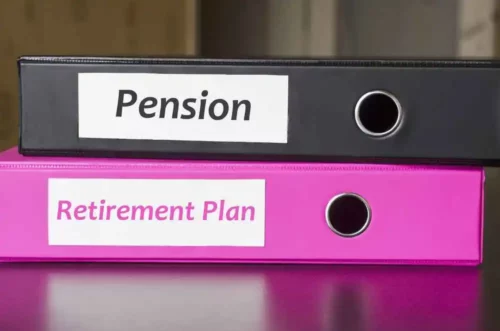Retirement planning is a crucial part of financial wellness, aiming to ensure a secure and comfortable future.
Given the myriad options available, many individuals wonder whether they can and should have multiple retirement plans. So, can you have multiple retirement plans?
This article delves into the intricacies of managing multiple retirement schemes, highlighting the benefits, potential obstacles, and how to navigate this complex landscape.
Understanding Retirement Plans
At the core of retirement planning are various plans like the 401(k), Individual Retirement Accounts (IRAs), and Roth IRAs. Each plan comes with its own set of rules, benefits, and contribution limits.
A 401(k) is often offered by employers, allowing employees to save a portion of their paycheck before taxes.
IRAs, on the other hand, offer individuals the opportunity to save separately, with tax benefits varying between traditional and Roth IRAs. The latter allows post-tax contributions, growing tax-free thereafter.
Can You Have Multiple Retirement Plans?
Yes, it’s possible and often advisable to have several retirement plans. This strategy can maximize your savings and tax advantages.
For example, someone might contribute to a 401(k) through their employer while also funding an IRA.
This approach provides a diversified retirement portfolio and leverages different tax benefits.
Types of Multiple Retirement Plan Strategies
Employer-Sponsored and Individual Plans
Combining an employer-sponsored plan like a 401(k) with an individual plan such as an IRA allows for a broad diversification of retirement assets.
This strategy can be beneficial, especially for those looking to save more than the 401(k) limit or seeking specific investments not available in their employer’s plan.

Small Business Owner Strategies
For small business owners, the options expand to SEP IRAs, SIMPLE IRAs, and Solo 401(k)s. Selecting the right combination depends on several factors including business income, structure, and retirement goals.
Each plan offers unique benefits tailored to the entrepreneurial context.
Balancing Multiple Retirement Plans
With multiple plans comes the need for careful management. It’s important to stay aware of the aggregate contribution limits and ensure the investment selections across accounts work in harmony, not against, your overall financial goals.
Managing tax implications is also vital. Different accounts have varying tax treatments both during the contribution phase and upon withdrawal in retirement. Navigating these rules can significantly impact your retirement income.
Challenges and How to Overcome Them
Operating multiple retirement accounts might lead to oversights such as exceeding contribution limits or creating overlapping investments that don’t align with risk tolerance.
Addressing these challenges requires diligent record-keeping and a strategic approach to allocation.
Regularly reevaluating your investment choices and adjusting as necessary can help minimize fees and keep your retirement strategy on track.
Leveraging the advice of financial professionals is also advisable when juggling multiple accounts.
Regular Review and Adjustment of Retirement Plans
Adapting your retirement planning to match life changes, financial market shifts, and evolving goals is essential.

An annual review of your retirement strategy can help ensure alignment with your long-term objectives, allowing for timely adjustments in contributions and investment selections.
Pro Tips
To thrive with multiple retirement plans, start early, stay informed, and consider the long-term tax and inflation implications. Using tools and seeking professional advice can also play a pivotal role in optimizing your retirement planning efforts.
Frequently Asked Questions
Can I contribute to a 401(k) and an IRA in the same year?
Yes, you can contribute to both a 401(k) and an IRA in the same year, subject to certain income limits and rules.
How do I keep track of contribution limits if I have multiple retirement plans?
Regularly review the IRS guidelines and any changes to contribution limits. It’s also helpful to maintain detailed records of your contributions.
What are the tax implications of contributing to multiple retirement plans?
The tax implications depend on the types of accounts. Traditional accounts typically offer tax deductions on contributions, whereas Roth accounts provide tax-free withdrawals in retirement.
How do multiple retirement plans affect my tax bracket in retirement?
Withdrawals from traditional retirement accounts are taxed as income, potentially affecting your tax bracket. Roth accounts offer tax-free withdrawals, providing more control over taxable income in retirement.
Can owning multiple retirement accounts affect my Social Security benefits?
Retirement account withdrawals can impact the taxation of Social Security benefits. Planning your income sources wisely can minimize this effect.
Conclusion
Managing multiple retirement plans is a viable strategy that can enhance your financial security in retirement.
By understanding the options available, making informed decisions, and regularly reviewing your strategy, you can maximize your retirement savings and enjoy the peace of mind that comes with well-planned financial future.
Navigating the landscape of multiple retirement plans offers a path to financial security in retirement. By carefully selecting and managing a diverse array of retirement accounts, individuals can build a robust savings plan tailored to their unique needs and goals.


 Tags:
Tags:










